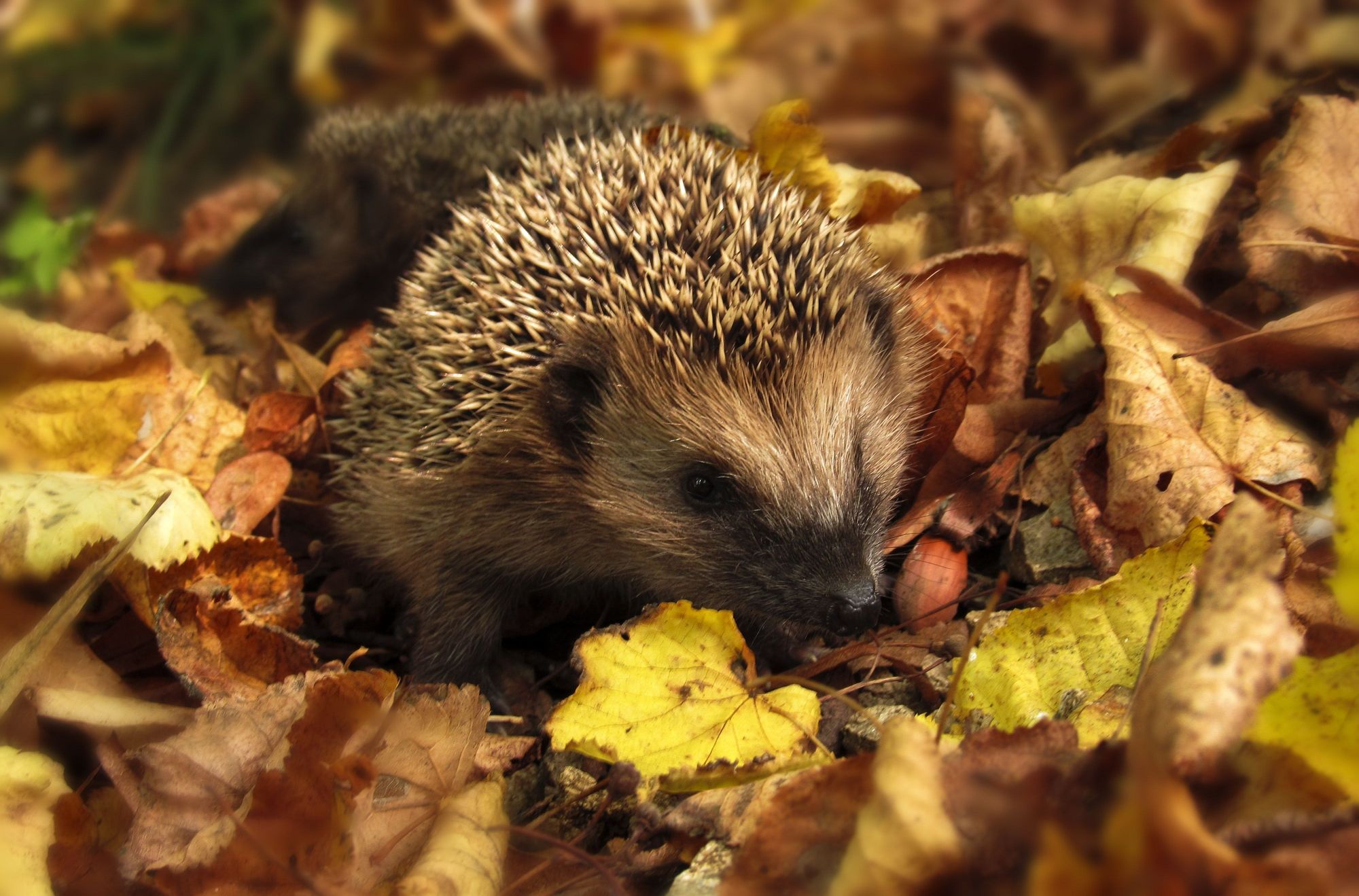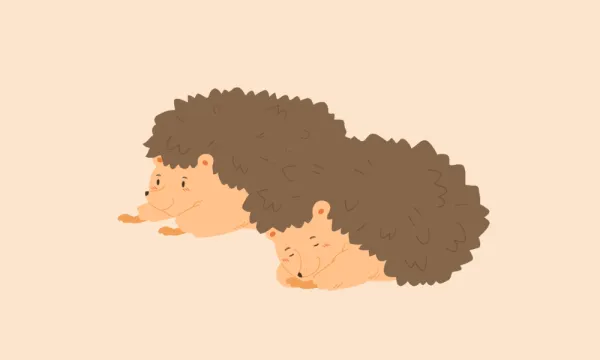Understanding our own behavior is tough sometimes. We say yes when we want to say no. We push people away to get their attention. We hope for change but hide from challenges.
Do you ever catch yourself experiencing these confusing contradictions?
You want a meaningful relationship, but you fear it.
You pull away and isolate yourself when you feel most lonely.
You crave deeper connection, but you avoid it, so you don’t let people down.
If you’ve ever felt any of these complicated emotions, you’ve actually wrestled with the hedgehog’s dilemma.
Don’t let the cute name fool you. This psychological phenomenon (sometimes called the porcupine problem) can actually cause serious problems for people.
Things to know
- The hedgehog’s dilemma is a theory developed by German philosopher Arthur Schopenhauer. It's a metaphor for human intimacy.
- The hedgehogs face a problem: do they huddle closer for warmth and risk being stabbed by each other’s quills, or do they pull back and freeze in isolation?
- Schopenhauer applies this problem to humans, whereby the closer we get to someone, the more painful it can be. The question is - is this pain preferable to suffering loneliness?
Want to know more? Find out what the hedgehog’s dilemma is, the meaning behind it, and how to solve it:
- The Hedgehog Dilemma: Defined
- Who Invented The Hedgehog’s Dilemma?
- What Is The Meaning Behind The Hedgehog’s Dilemma?
- Anxious And Avoidant Hedgehogs
- How Do You Solve The Hedgehog’s Dilemma?
- A Healthy Hedgehog Approach
The Hedgehog Dilemma: Defined

The hedgehog’s dilemma is a simple idea.
Imagine it’s the dead of winter. A number of porcupines—or a group of hedgehogs—shiver in the wind. To find warmth on the bitterly cold day, they huddle together to share body heat.
The trouble is, the porcupines’ quills prick one another as soon as they get too close. They quickly retreat to a safe distance.
As the cold weather sinks in, the porcupines again find themselves freezing without close contact. Trying again, the animals find that they can’t avoid their neighbors’ sharp spines.
Now they’re faced with the dilemma: do they endure the pain of winter in isolation or share the pain of the stabbing quills?
To compromise, the porcupines have no choice but to find the right distance that keeps them warm enough to survive without touching.
It’s a flawed solution. They aren’t as close as they want to be, but they’re too afraid to move any closer. The porcupines are so paralyzed by the fear of feeling or causing pain with their spines that they can never be truly satisfied.
Who Invented The Hedgehog’s Dilemma?
The hedgehog’s dilemma was invented by German philosopher Arthur Schopenhauer in 1851. He described the prickly problem in his book, Parerga und Paralipomena.
Schopenhauer described how societal needs drive us together, but the disagreeable qualities of our nature force us apart again. He recognized the struggle between being in a relationship with others and experiencing mutual pain.
Many years later, the theory of the German philosopher was popularized by the controversial psychologist Sigmund Freud. Today, the hedgehog’s dilemma is widely known for its examination of complex questions about human connection and isolation.
What Is The Meaning Behind The Hedgehog’s Dilemma?
The hedgehog’s dilemma is widely considered to be a metaphor for human intimacy. We deeply desire to be close to people. We crave emotional connection and intimate relationships. But at the same time, we’re afraid.

Why?
Because we are the hedgehogs.
Instead of huddling for warmth, we share love and affection. The cold winter is the loneliness we experience when we withdraw from society. Insensitive words and poor decisions are the sharp quills we use to inadvertently stab one another.
The closer we get to a person, the greater mutual harm we cause. It’s no fault of our own; pain comes with the territory of intimacy. Despite our good intentions, it’s inevitable that someone will get hurt.
But at the same time, we don’t want to be alone. The isolation is just as harmful as anything another human could do to us.
We’re faced with a choice: suffer from loneliness, or suffer at the hand of a friend or partner?
Like the hedgehogs, we constantly try to strike a balance between forming strong relationships and keeping a safe distance. Sticking to polite small talk and dodging commitment are some of the ways we protect ourselves from a loved one’s spiky spines.
But some of us take additional steps to avoid pain.
Anxious And Avoidant Hedgehogs

It’s not unusual for our actions to go against our desires. But some people self-sabotage more than others.
A person with an Avoidant attachment style is more prone to guarding themselves against human porcupines’ quills. Instead of trying to get closer to the group, this person prefers the pain of loneliness.
Like the porcupine that withdraws, Avoidants fear intimacy. But deep down, they long to experience the warmth of human connection.
On the opposite end of the spectrum, the Anxious attachment style draws too close to the other porcupines. In their search for intimacy, they get pricked over and over again. Their fear of isolation makes them forget to exercise cautious behavior and pushes them into a dangerous position.
As different as they seem, both types of people actually experience the hedgehog’s dilemma very similarly: they are trapped in a paradox that prevents them from meeting their emotional needs.
How Do You Solve The Hedgehog’s Dilemma?
So if you’re stuck in the hedgehog’s dilemma, how do you overcome it?
The porcupine problem is a tricky one. But it isn’t impossible to solve.
The key to working out the dilemma is to find balance.
Here are three different ways you can manage your emotional needs and minimize suffering if you are wrestling with this phenomenon:
Compromise
Arthur Schopenhauer himself proposed that the solution to the hedgehog’s dilemma is compromise. He wrote:
“At last, after many turns of huddling and dispersing, they discovered that they would be best off by remaining at a little distance from one another.”

Like the hedgehogs, people who find themselves at two extremes of the dilemma must meet in the middle. Total isolation or intimacy will only cause greater pain.
If you find yourself overstepping or pulling away in your intimate relationships, talk to your partner. Work together to identify a compromise that works for both of you. It might not be as much time together as you want, or it might be too much. But striking a balance will save you both a lot of needless suffering.
Set boundaries
Another solution the German philosopher wrote about was setting boundaries.
He said that the naturally warmer hedgehogs chose to isolate themselves from the colder ones. In this way, they protected their own heat while guarding themselves against the others’ sharp spines.
The difference between the warm hedgehog and the lonely hedgehog comes down to intention. While the isolated hedgehog that shivers in the cold wishes to be closer to the group, the warmer hedgehog is happy to stay away.
If you are constantly having your energy zapped by unhappy human porcupines that rely too much on your warmth, try to step back. Setting a healthy boundary will keep you at a safe distance from the people that want to use you.
Face your fears
The most challenging part of the hedgehog’s dilemma is the reality that no matter what we do, we can’t avoid pain entirely. This is a difficult truth to accept. No one wants to get hurt. And we don’t like to hurt the people we love, either.
But in order to solve the porcupine problem, we must set aside our fears and willingly take the risk.
Exercising caution is good and important. But if we ever want to experience true intimacy, we need to allow ourselves to get poked by a few quills. Face your fears, and move closer to the group. It will save you from years of loneliness.
A Healthy Hedgehog Approach

The hedgehog’s dilemma is tough to overcome. Changing your ways is never easy, especially when fear plays a part. But not everyone is caught in the hedgehog’s dilemma. Just because you prefer to be alone doesn’t mean that you avoid intimacy.
There’s a big difference between solitude and loneliness.
One keeps a safe distance because they are comfortable with their own company. The other practices social distancing despite wishing for human connection.
It’s important to know when you need to inch closer and when it’s okay to stay away. Protect your own warmth, and gravitate toward hedgehogs that feed your fire. Set boundaries, so you’re not left cold in the winter.
If you’re struggling with the hedgehog’s dilemma, push yourself to move in without touching the sharp spines.
And if you do? You’ve overcome a huge hurdle that brings you one step closer to the intimacy you crave.









